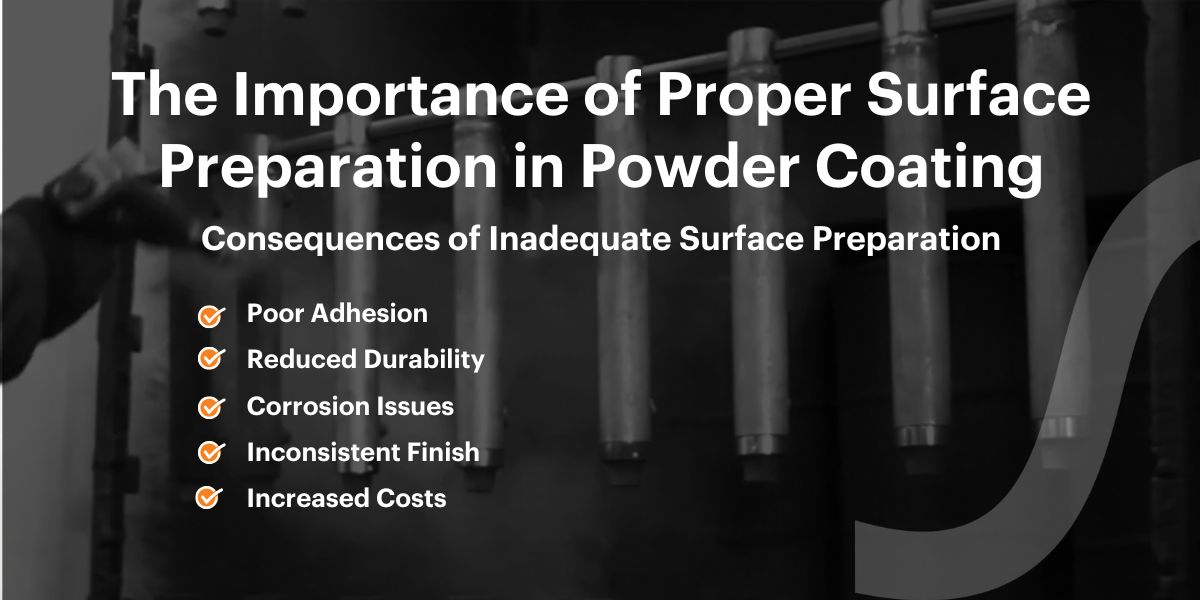Surface preparation is a crucial step in the powder coating process. It sets the foundation for a successful finish and ensures that the coating adheres properly to the substrate. When surface preparation is inadequate, it can lead to a range of issues that compromise the quality and longevity of the final product. Here’s what can happen when surface preparation is inappropriate and five common mistakes to avoid.
Consequences of Inadequate Surface Preparation
Poor Adhesion When contaminants like oil, dirt, and rust are left on the surface, the powder coating may not bond effectively. This can result in peeling, chipping, or flaking over time, reducing the overall aesthetic and protective qualities of the coating.
Reduced Durability Inadequate surface preparation compromises the coating’s ability to withstand environmental factors such as moisture, UV radiation, and chemicals. This can lead to quicker deterioration, affecting the lifespan of the coated item.
Corrosion Issues Without proper cleaning and pretreatment, underlying corrosion can continue to develop beneath the coating. This can create blisters and cause the coating to fail prematurely, especially in environments exposed to moisture.
Inconsistent Finish Contaminants can cause uneven powder distribution, resulting in a blotchy or inconsistent appearance. This not only affects the visual appeal but can also lead to weak spots in the coating.
Increased Costs Poor surface preparation often results in the need for rework, including stripping and re-coating. This can increase material costs and labor time, impacting overall project budgets.
Common Mistakes in Surface Preparation
Neglecting Cleanin Failing to remove contaminants such as oil, grease, or dirt can lead to adhesion issues. Always ensure surfaces are thoroughly cleaned using appropriate chemical or mechanical methods before coating.
Skipping Pretreatment Not utilizing chemical pretreatment can significantly diminish the coating’s effectiveness. Pretreating surfaces creates a chemically receptive layer that enhances adhesion and durability.
Ignoring Surface Profile The surface profile should be prepared to meet the requirements of the coating process. Smooth surfaces may not provide enough texture for the powder to adhere effectively, while overly rough surfaces can lead to uneven coatings.
Using Inappropriate Cleaning Methods Employing the wrong cleaning techniques or materials can damage the substrate or leave behind residues that interfere with adhesion. Always choose methods that are compatible with the substrate material.
Rushing the Preparation Process Taking shortcuts or rushing through the preparation can lead to overlooked contaminants or inadequate cleaning. Ensure adequate time is allocated for thorough surface preparation to achieve the best results.
Proper surface preparation is vital in the powder coating process, as it directly impacts the adhesion, durability, and overall quality of the coating. By avoiding these common mistakes and implementing effective cleaning and pretreatment methods, manufacturers can enhance the performance and longevity of their powder-coated products. A little extra attention during the surface preparation phase can lead to significant improvements in the final outcome, saving time and costs in the long run.



